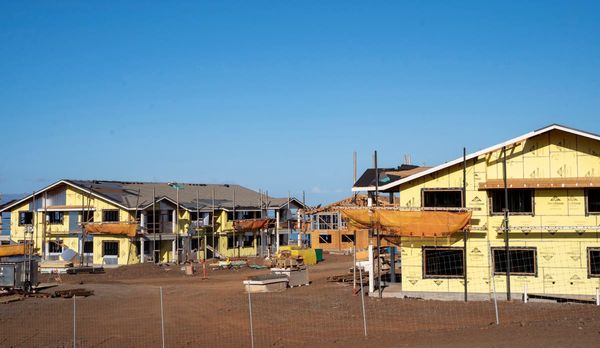
Australia’s inflation rate eased during the first three months of 2023 with the quarterly increase the lowest since the end of 2021.
The headline consumer price index (CPI) for the first three months of 2023 came in at an annual rate of 7%, the Australian Bureau of Statistics said. The number was in line with economists’ predictions, and slower than the 7.8% pace clocked in the December quarter.
The separate trimmed mean gauge of inflation that the Reserve Bank monitors closely came in at 6.6%. That compared with 6.9% for the final three months of last year and it remains well outside the central’s bank’s target band of 2%-3%.
Compared with the December quarter, the headline CPI rate came in at 1.4%, or its slowest pace in five quarters.
“While prices continued to rise for most goods and services, many of these increases were smaller than they have been in recent quarters,” said Michelle Marquardt, ABS head of prices statistics.
The March inflation figures are the final major numbers the RBA will use when its board meets next Tuesday to decide again on interest rates. Early this month, the bank snapped its record run of 10 consecutive hikes while leaving open the option of another rate increase if additional information such as inflation demanded one.
Prior to today’s CPI release, investors viewed the prospect of a May rate rise by the RBA as just a 17% chance, with the next move to be a cut. Economists, though, were more split, with some saying the central bank has at least one more rate rise arrow in its quiver.
After the release of the data, the Australian dollar remained steady at about US66.25c. Shares erased their losses of about 0.3% for the day to be basically flat just prior to noon.
Economists such as Dwyfor Evans, a strategist at State Street Global Markets, said the “generally weaker tone” to inflation included the lowest underlying rate since the end of 2021.
“Although the absolute level of inflation remains markedly above the RBA target, the weaker series offers further evidence that the rate hiking cycle has likely come to an end, as alluded to in cash rate futures,” Evans said.
David Bassanese from Betashares agreed that the March quarter numbers “provided reassuring evidence that inflation likely peaked late last year [and] there were no nasty shocks”.
“[There’s] a good chance the RBA won’t need to raise interest rates again this year,” Bassanese said. “Instead, I still see scope for a rate cut on or before Melbourne Cup as the economy slows.”
However, Sean Langcake from BIS Oxford Economics said the inflation was in line with the RBA’s most recent forecasts. Still, “we think there is enough momentum in core and services inflation to warrant tighter policy settings, and maintain our expectation for another rate hike in May”.
For the March quarter, the biggest contributors to inflation included the 4.2% increase for medical and hospital services and a 9.7% increase for tertiary education.
Energy prices again featured prominently in the list of most costly goods, Marquardt said, with the ongoing war in Ukraine and unplanned outages at coal-fired power stations playing their role in the increase.
“Price reviews reflecting higher wholesale gas prices led to rises in gas and other household fuels, with rises seen across all eight capital cities and the strongest rise recorded in Melbourne (22.7%),” she said.
“This quarter’s rise was notable as prices increased in all eight capital cities, whereas typically only Melbourne’s prices are reviewed in the March quarter.”
The cost of so-called non-discretionary items increased 7.2% in the March quarter from a year earlier, retreating from the 8.4% rate of increases in the December quarter.
Other signs that inflation may remain uncomfortably high for the RBA include the fact service costs rose to an annual rate of 6.1% in the January-March period, or the fastest climb since since 2001.
Rents were a factor in that increase, with rentals in capital cities advancing at the most since 2010, reflecting strong demand and low vacancy rates, the ABS said.
Food inflation may be off the worst of the flood disruptions but prices were still rising at an annual 8% rate in the March quarter, not much lower than the 9.2% pace in the previous three months.
On the more promising side, clothing and footwear notched a 2.6% slide compared with the December quarter. Furnishings, household equipment and services also eased 0.5%.
Overall, goods were still 7.6% more expensive than a year ago, a rate well down on the 9.5% clip in the final three months of last year. Diesel prices sank 10.3% for the quarter, while unleaded petrol was basically unchanged.
For March alone, the CPI came in at 6.3%, down from 6.8% in February and 7.4% in January, the ABS said.







